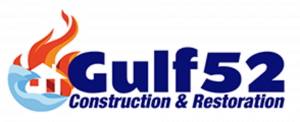The decisions made before hurricane season starts can determine how well a property withstands the storm and how quickly recovery begins afterward”
HAMMOND, LA, UNITED STATES, May 14, 2025 /EINPresswire.com/ -- As hurricane season approaches, property owners across Louisiana are urged to begin preparations early to reduce potential damage and improve recovery outcomes. The Gulf Coast region remains one of the most storm-prone areas in the United States, with tropical systems frequently bringing damaging winds, torrential rain, and prolonged power outages.— Earl Carr, Jr.
Proactive planning and routine maintenance are essential to safeguarding homes and properties. Preparation must extend beyond stocking up on supplies. Structural resilience, emergency protocols, and detailed documentation all play a role in mitigating risk during extreme weather events.
Earl Carr, Jr., president of Gulf 52 in Hammond, Louisiana, emphasized that preparation is a year-round responsibility—not something to be addressed only when a named storm appears in the Gulf.
“Hurricane resilience begins with consistent planning,” said Carr. “The decisions made before hurricane season starts can determine how well a property withstands the storm and how quickly recovery begins afterward.”
1. Inspect the Roof and Secure Loose Materials
Roof damage is among the most common and costly results of high winds. An inspection of shingles, flashing, and seals should be conducted at the beginning of each hurricane season. Any signs of wear, missing materials, or unsecured sections must be addressed. Loose fascia, gutters, and exterior siding should be reinforced to prevent wind uplift and water intrusion.
2. Trim Trees and Remove Debris
Falling limbs and wind-blown debris contribute significantly to property damage. Trees near the home should be trimmed, especially those with dead branches or overhanging limbs. Yard objects such as patio furniture, grills, or garden equipment should be stored securely or anchored to prevent them from becoming airborne during strong winds.
3. Check Drainage Systems and Gutters
Blocked gutters and poor drainage can lead to water pooling around the foundation, increasing the risk of flooding. Downspouts should be cleared of leaves and sediment. French drains, sump pumps, and grading around the home should be assessed to ensure water flows away from the structure.
4. Reinforce Doors and Windows
Impact-rated windows and hurricane shutters offer increased protection. Where those aren’t available, pre-cut plywood panels should be stored for quick installation. Garage doors must be checked for wind-rated bracing. Entry doors should have three hinges and a deadbolt at least one inch long.
5. Elevate or Relocate Vulnerable Systems
Electrical panels, HVAC components, and water heaters located at or below grade should be elevated or otherwise protected from flood exposure. Where elevation isn’t feasible, waterproof barriers or protective enclosures can help reduce the risk of damage.
6. Review and Update Insurance Coverage
Homeowner policies should be reviewed before hurricane season to verify adequate coverage. This includes windstorm protection, flood insurance through the National Flood Insurance Program (NFIP), and documentation of recent improvements or additions. Policyholders are advised to maintain digital and physical copies of insurance documents for ease of access in the event of evacuation or displacement.
7. Document Property Condition
Photos and video documentation of the home’s condition prior to a storm can support insurance claims and recovery efforts. Every room, exterior feature, and significant item of value should be recorded with a timestamp and securely stored offsite or in cloud storage.
8. Assemble an Emergency Supply Kit
While emergency supply kits are commonly discussed, completeness and organization are critical. A proper kit should include water, non-perishable food, first-aid supplies, medications, batteries, flashlights, sanitation items, and basic tools. Supplies should be stored in waterproof containers and periodically checked for expiration dates.
9. Develop a Family Emergency Plan
Communication plans, evacuation routes, and meeting locations should be discussed in advance. Contact information for neighbors, family members, and local emergency services should be stored in multiple formats, including printed lists and digital backups. Local shelter locations and pet-friendly facilities should be identified ahead of time.
10. Secure Important Documents and Valuables
Vital documents such as birth certificates, social security cards, property deeds, and medical records should be stored in waterproof, fire-resistant containers. Copies should be uploaded to secure cloud storage or provided to a trusted relative outside the risk zone.
11. Prepare Backup Power Sources
Standby generators, portable generators, and solar battery systems can provide essential power during outages. Any generator must be used with caution, following safety guidelines to prevent carbon monoxide poisoning and equipment damage. Fuel supplies should be stored in approved containers and rotated regularly.
12. Know Local Evacuation Routes and Procedures
Hurricane evacuation plans, including route maps and transportation options, are published by parish emergency preparedness agencies. Reviewing these routes before a storm arrives reduces stress and confusion during mandatory evacuations. Traffic patterns may change based on storm severity and proximity.
Louisiana’s hurricane season officially runs from June 1 through November 30, but preparation should begin well before storms are forecast. Properties that are properly secured, documented, and maintained experience fewer losses and recover more quickly.
By taking early action on these essential tasks, homeowners position themselves to weather the storm both physically and financially.
Morgan Thomas
Rhino Digital, LLC
+1 504-875-5036
email us here
Visit us on social media:
Facebook
Legal Disclaimer:
EIN Presswire provides this news content "as is" without warranty of any kind. We do not accept any responsibility or liability for the accuracy, content, images, videos, licenses, completeness, legality, or reliability of the information contained in this article. If you have any complaints or copyright issues related to this article, kindly contact the author above.



